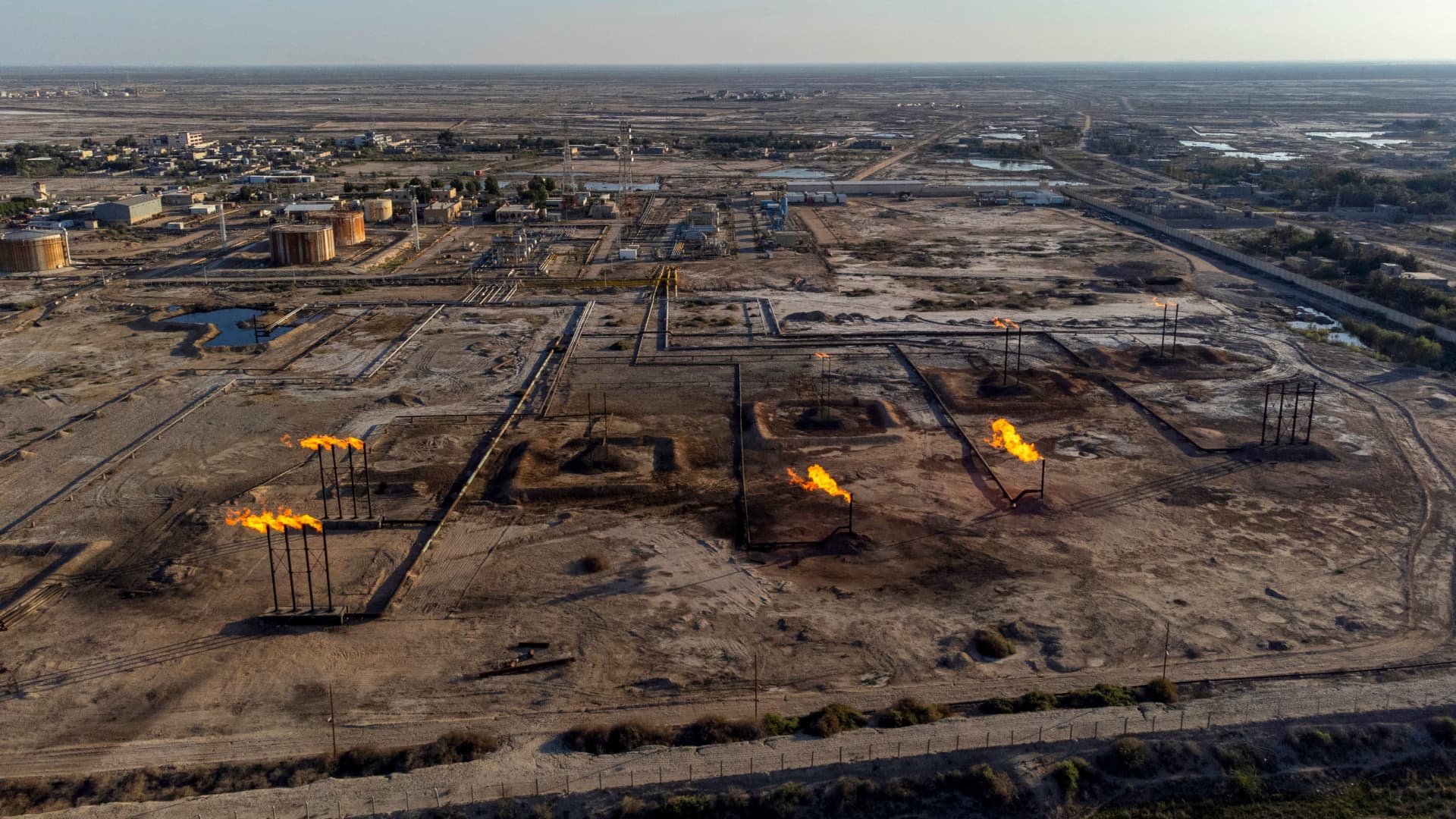
In its latest monthly oil market report, the IEA said the energy alliance’s self-described “precautionary move” was likely to spell bad news for consumers at a time of heightened economic uncertainty.
Hussein Faleh | Afp | Getty Images
The International Energy Agency on Friday warned surprise oil output cuts from the OPEC+ producer group risk exacerbating a projected supply deficit and could scupper an economic recovery.
In its latest monthly oil market report, the IEA said the energy alliance’s self-described “precautionary move” was likely to spell bad news for consumers at a time of heightened economic uncertainty.
“Consumers confronted by inflated prices for basic necessities will now have to spread their budgets even more thinly,” the IEA said. “This augurs badly for the economic recovery and growth.”
Led by Saudi Arabia and Russia, OPEC+ is an influential group of 23 oil-exporting nations that meets regularly to determine how much crude to sell on the global market.
Several OPEC+ members announced on April 2 that they were set to tighten global production by an additional 1.16 million barrels per day until the end of the year.
The decision, which the White House criticized, was said to have been made as part of an independent initiative unlinked to broader OPEC+ policy.
The cuts add to Russia’s existing plans to trim 500,000 barrels per day of its production from March until at least the end of the year. It means the combined voluntary cuts of OPEC+ members will be in excess of 1.6 million barrels per day.
Rising oil stocks likely contributed to the move, the IEA said, highlighting that OECD industry stocks in January hit their highest level since July 2021.
‘Upward pressure’ on oil prices
“We were already expecting the market to shift into deficit in the second half of the year. Now, with these cuts that will take place from May, we’re expecting the market to shift into a deficit much earlier and with bigger losses in the second half of the year,” Toril Bosoni, head of oil industry and markets division at the IEA, told CNBC’s “Street Signs Europe” on Friday.
Bosoni said OPEC+ cuts would push world oil supply down by 400,000 barrels per day by the end of the year as an increase in production by non-OPEC countries, such as the U.S., Brazil, Canada and Norway, “fail to offset the declines that we now expect from OPEC countries.”
“So, with oil demand rising [and] continuing to increase through the remainder of the year, we are expecting renewed inventory draws and upward pressure on prices,” she added.
Oil prices edged higher on Friday morning.
International benchmark Brent crude futures traded at $86.33 per barrel at around 10:40 a.m. London time (5:40 a.m. ET), up 0.3% for the session, while U.S. West Texas Intermediate stood at $82.39 per barrel, also up 0.3%.
— CNBC’s Ruxandra Iordache contributed to this report.

